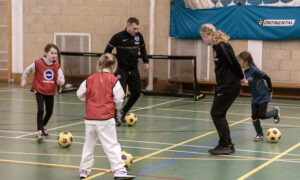‘Falsehood flies, and the truth comes limping after it’: how relevant Swift’s comment is today in a world where ‘fake news’ proliferates.
This week’s publication of Ofcom’s Children and Parents Media Use and Attitudes report raised concerns about the under-age use of social media – 46% of 11-year-olds, 51% of 12-year-olds and 28% of 10-year-olds now have a social media profile – despite most platforms’ minimum age being 13. It also found that children were increasingly getting their news from social media and that parental awareness of the age limit was low – with about eight in 10 of those parents whose children use Instagram or Snapchat unaware of the restrictions. More than four in 10 said they would allow their child to use social media ahead of them reaching the minimum age required.
Better news is that most children were aware of the concept of fake news; just 32% believed that news accessed on such platforms was reported truthfully and older children – aged 12 to 15 – were relatively sophisticated consumers of news. More than half (54%) said they used social media platforms such as Snapchat, Facebook and Twitter to access online news, making it the second most popular source after television (62%). Of those aware of fake news, 86% said they would make an effort to fact-check stories. Their methods included:
• Seeing if a news story appears elsewhere (48%)
• Reading comments after the report to verify its authenticity (39%)
• Checking whether the organisation behind it is one they trust (26%)
• Assessing the professional quality of the article (20%)
Emily Keaney, head of children’s research at Ofcom, said: “It’s reassuring that almost all children now say that they have strategies for checking whether a social media news story is true or false. There may be two reasons behind this: lower trust in news shared through social media, but the digital generation are also becoming savvy online.”
Other general trends identified were that Snapchat has rapidly grown in popularity among young people, while Facebook is on the wane. In 2014, 69% of 12 to 15-year-olds had a social media profile, and most of these (66%) said their main one was on Facebook. That has now dropped to 40%. Furthermore, YouTube has become a more recognised brand among children than the BBC and ITV, with 90% of 12 to 15-year-olds watching music videos and those showing pranks and challenges.
The message for parents and educators seems to be that simply banning social media will not help our children: we need to help them develop strategies to negotiate them safely and with discrimination. At BHHS we will continue to keep a focus on developing online safety and literacy across the school at all levels.
Meanwhile, I’d recommend, to older students and parents, Charles Seife’s book, Virtual Unreality: The New Era of Digital Deception (Penguin, 2015) – a scary, but highly informative, read.


